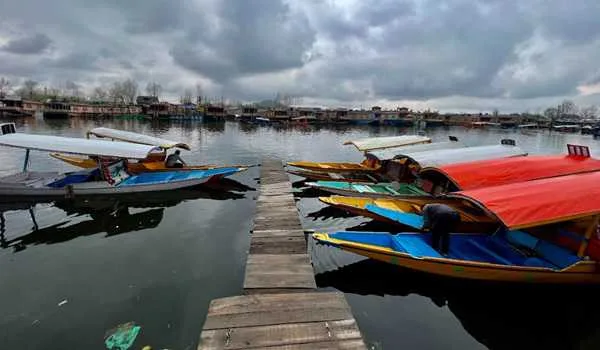Kashmir, often called the “Paradise of Earth”, boasts an extraordinarily diverse climate. Nestled in the northernmost part of India, this region experiences various weather patterns throughout the year. Let’s delve into the seasons & climatic variations that make Kashmir unique. Spring in Kashmir is a time of rejuvenation & beauty. As the snow begins to melt, the valley bursts into a riot of colours. Cherry blossoms, tulips, & other vibrant flowers bloom, transforming the landscape into a picturesque painting. The temperature during this season ranges from 12oC to 23oC, making it an ideal time for tourists to explore the region’s natural beauty. The fragrance of blooming flowers & the freshness in the air create & an enchanting atmosphere.
Summer in Kashmir is a pleasant & mild season. The temperature ranges from 15oC to 30oC, providing a welcome respite from the scorching heat experienced in other parts of India. The lush green meadows, clear blue skies & the shimmering water of Dal Lake make summer an ideal time for outdoor activities. Tourists flock to popular destinations like Gulmarg, Pahalgam & Sonamarg to enjoy trekking, horse riding and Shikara rides. The cool breezes & the serene ambience of the valley offer a perfect escape from the hustle and bustle of city life.
Autumn, also known as the “golden season” in Kashmir, is a time of harvest and celebration. The valley is adorned with gold, red and orange hues as the chinar trees shed their leaves. The temperature ranges from 10oC to 25oC, creating a comfortable and pleasant climate. The apple orchards are in full bloom and the fragrance of ripe apples fills the air. It is a time when local festivals and cultural events are in full swing, giving tourists a glimpse into Kashmir’s rich traditions & heritage. Winter in Kashmir is a magical & pristine season. The valley is blanketed in thick snow, transforming into a winter wonderland. The temperature can drop to as low as -2oC & can go up to 12oC during the day. Popular tourist destinations like Gulmarg become a hub for winter sports enthusiasts. Skiing, snowboarding & ice skating are some activities that attract adventure seekers worldwide. The charms of a snow-covered landscape, with traditional houses & markets, create an unforgettable experience for visitors.
Kashmir’s unique geography plays a significant role in its climate variations. The region surrounds the Himalayan mountain range, which acts as a natural barrier against extreme weather conditions. The varying altitudes within the valley also contribute to the diverse weather patterns. The higher altitudes, such as those in Gulmarg and Sonamarg, experience more snowfall and colder temperatures compared to the lower regions like Srinagar. The Jhelum River, which flows through the valley, moderates the climate somewhat, making it warmer than other regions at similar latitudes. The influence of the western disturbances, which bring rain and snow to the region, also contributes to the unique weather patterns observed in Kashmir.
The weather in Kashmir significantly influences the lifestyle and culture of its inhabitants. The traditional houses, known as “Kashmiri Pandits”, are designed to with stand the harsh winter conditions. Using kangri and pashmina shawls are cultural adaptations to keep warm during the chilly months. The changing seasons also dictate the agricultural practices in the valley. Saffron, apple and walnuts are some of the major crops cultivated in Kashmir and their harvest seasons are aligned with the climatic conditions. The festivals and celebrations in the region are often centred around the changing seasons and the agricultural calendar.
The weather in Kashmir is a blend of contrasts and beauty. Each season brings with it unique charms and characters, contributing to the region’s allure and mystique. Whether it’s the blooming flowers of spring, the lush greenery of summer, the golden hues of autumn or the pristine snow of winter, Kashmir offers a captivating experience year-round. The diverse climate not only shapes the natural landscape but also profoundly influences the culture, lifestyle and traditions of the people who call this paradise their home.


